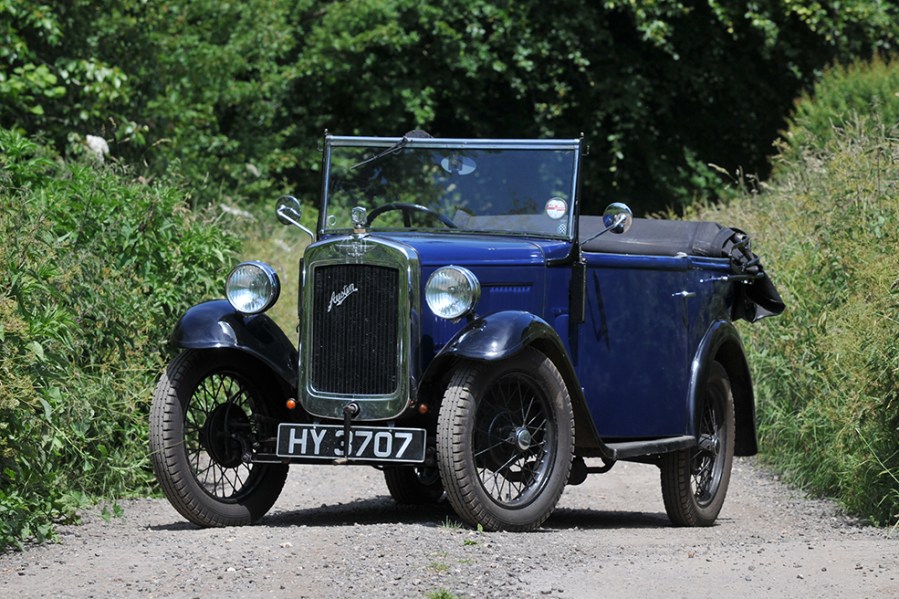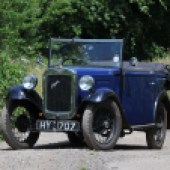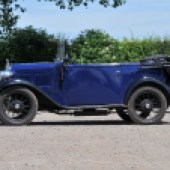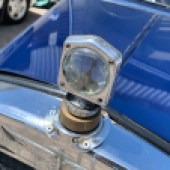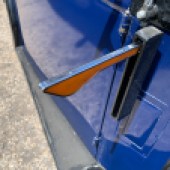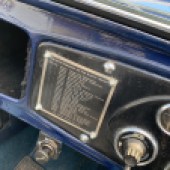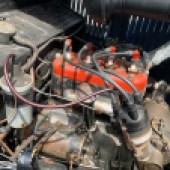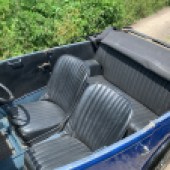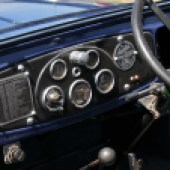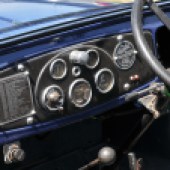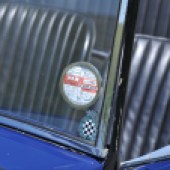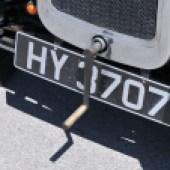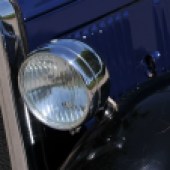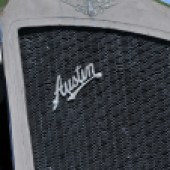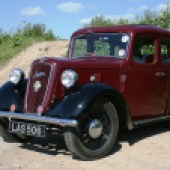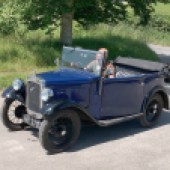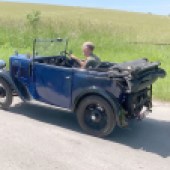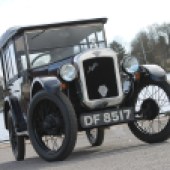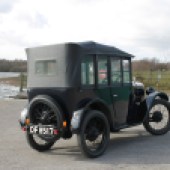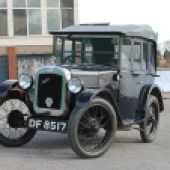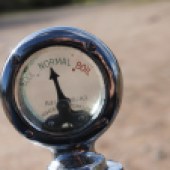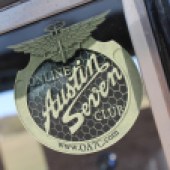The car that transformed the motoring landscape, the Austin Seven offers an easy entry into the world of pre-war motoring. Here’s how to buy a good one
The Austin Seven was a hugely important car, not least because it simultaneously saved its maker from collapse while mobilising an entire nation – and then soon after, large parts of the world too. The car stands as a milestone in automotive history as a result, setting the stage for decades of British car manufacturing and, in licence-built (or sometimes copied) form, forming the early efforts of numerous famous manufacturers including BMW and Nissan.
The Seven was marketed as ‘a real car in minature’ and offered many families their first chance at four-wheeled car ownership. It was a tiny car even by 1920s standards with its 6’3” wheelbase and 4’6” width, but its great proportions meant it looked right – and that appeal continues today.
Some 290,000 Sevens were sold over the model’s 16-year lifespan, with examples spanning boxy saloons to sporty two-seaters – and from 1937 – the ‘Big Seven’, which took the recipe and upsized it slightly as car buyers became more affluent. Today, the Seven makes a delightful introduction to the world of pre-war motoring; it’s handy size makes the car easy to drive and simple to work on even in a domestic single garage.
The Seven came about as an indirect result of Austin’s involvement in the First World War. The firm had been producing cars at the Longbridge plant since 1905 and by early 1914 had become sufficiently successful to float as a public company. Shortly afterwards of course, war was declared and the Austin factory immediately turned from car manufacture to munitions, expanding dramatically as a result.
By 1918, the lucrative wartime contracts dried up pretty suddenly but Austin had only its prewar car designs to draw on. Large, expensive cars like the Austin 20 were no longer big sellers and lacking sufficient work to keep the now sizeable workforce and factory occupied, the company entered administration in 1920. The smaller Austin 12 – essentially a scaled-down version of the Austin 20 – was hastily brought to production in 1921 but the firm needed to do more.
The answer in Herbert Austin’s mind was a radically smaller car which could be produced and sold sufficiently cheaply to replace the motorcycle sidecar combinations which were pretty much the only transport affordable for the average family. His resolve was strengthened by the introduction in 1921 of the ‘horsepower tax’ in Britain which taxed a car according to the total area of its piston crowns.
Austin’s fellow directors weren’t convinced however, wanting to keep Austin as an expensive, upmarket brand. As a result, Austin set to on his own account developing the new car, poaching a draughtsman by the name of Stanley Edge from the Longbridge factory to work in 1:1 scale on the full-size billiard table at Austin’s home.

Edge convinced Austin to use a four-cylinder engine instead of opting for a motorbike-style twin and by rating cars on total piston surface area, the new Horsepower Tax encouraged small bore, long-stroke engines. This resulted in the Seven’s 696cc sidevalve engine using a 55mm bore and 77mm stroke. With an alloy crankcase and iron block with detachable head, its power output was a heady 7.2 bhp and drove through a three-speed manual box. It was thoroughly minimalist in detail: cooling was by thermo-siphon alone with no water pump, while the crankshaft initially ran in only two bearings and was splash rather than pressure-lubricated. A dynamo was driven directly from the timing gears and ignition was by magneto until 1928.
The chassis was a simple A-shaped affair with a wheelbase of 6’3” and a 40-inch track. A solid front axle used a transverse central leaf spring, with semi-elliptic springs locating the live rear axle and early cars doing without dampers entirely. With the standard four-seater open body it weighed in at just 360kg or less than half the weight of a Lotus Elise.
This made the 7.2 bhp entirely adequate and the top speed of 50 mph must have felt plenty fast enough with the foot brake operating on only the rear wheels and the fronts operated by the handbrake.
The new car was publicly announced in July 1922 and since Austin had invested his own money in the car’s development, he had patented several of its unique features in his own name, this allowing him to charge the company a royalty of two guineas on each Seven produced. Within a few years the Seven had taken off and by time the last of the 290,000 cars had left Longbridge, those royalties had mounted up to great wealth. Sales were initially slow but once they took off, the cyclecar and sidecar industries were almost entirely eliminated.
Soon after launch, in March 1923 the engine was uprated to 747cc and 10.5 bhp, with a coil ignition replacing the magneto in 1928 and a three-bearing crankshaft introduced in 1936. In 1930 the front and rear brakes were coupled together, meaning the pedal slowed all four wheels, with improved leverage from 1935 and Girling rear brakes from 1938.
The chassis was lengthened in 1931 by six inches to give a 6’9” wheelbase and the track widened proportionally. The gearbox became a four-speed unit in 1932, gaining synchromesh on third and fourth in 1933 and second in 1934.
Initially only available as an open four-seater, a closed saloon was introduced in 1926 and a two-seater added in 1929. Many different variants were produced (see our side panel) and the cars were updated and restyled from 1934 and given ‘jewel’ names, the four-seater saloon being the Ruby, the two-seater tourer the Opal and the cabriolet saloon the Pearl.
The basic nature of the Seven made it ideal for producing special-bodied sports models and a thriving racing scene was built up which still exists to this day using Sevens with tuned engines and cut-down bodywork. After supercharged cars started achieving racing success, the factory produced a small number of supercharged Super Sports which proved popular enough for a mainstream model to be developed.
Called the Ulster after its success in the famous Northern Ireland road racing event, it was produced from 1930 to 1932 and was available either in normally aspirated form or with a supercharger, featuring a lower chassis and uprated front suspension. Just 168 Ulsters were produced but since then countless replicas have been made and Austin built on its success by offering roadgoing versions of the Ulster style cars, including the Nippy and Speedy.
In 1937, Austin added a slightly larger version of the car to the range, giving it the title Big Seven, the idea being to provide a model between the original Seven and the much larger and more costly Austin Ten. Sold in tandem with the Ruby, the Big Seven used a 6.5-inch longer wheelbase which allowed for four doors and although there was no boot, the spare wheel compartment lid could be folded flat to allow luggage to be carried on top.
The Big Seven also used steel wheels instead of the wire fitted to previous cars and the big change was the 900cc, 25 bhp engine complete with pressure lubrication.
When production finally ended in 1939, production of Sevens totalled some 290,000 including the sports specials and the commercial derivatives.
Bodywork
These cars were built in the traditional way using a partly wooden-framed body with steel, aluminium or fabric covering and this means you need to be on the alert for both rotting wood and corroded metal. As a general guide, if square sections of the body feel spongey when squeezed by hand it means the wood inside is rotting. Check the lower half of the body at the rear end, plus the floor and sills. The base of the scuttle can also rot, as can the wing mountings. On the Ruby and Big Seven, check the area where the running board and rear wings meet.
The good news is that nothing on these cars need be terminal as there’s such a network of specialists and even an entire new body can be built up from scratch. DIY-minded owners report success in unpicking the skin, repairing rotten wood sections and refitting it, while a brand new ready-to-assemble wood frame for a door is £199. Wings are available for most models at around £600 per pair, while body repair panels are incredibly affordable compared to many more modern classics.
Check that the chassis and body numbers match up, since it’s a good indication that the car hasn’t been built up from a collection of parts. The A-shaped chassis is tough and basic, so even after nearly a century you might well find it’s perfectly sound. It’s worth inspecting it carefully though as it’s pretty easy to access by crawling under the car. The rear end and around the battery is important, but engine oil leaks tend to protect the front end.
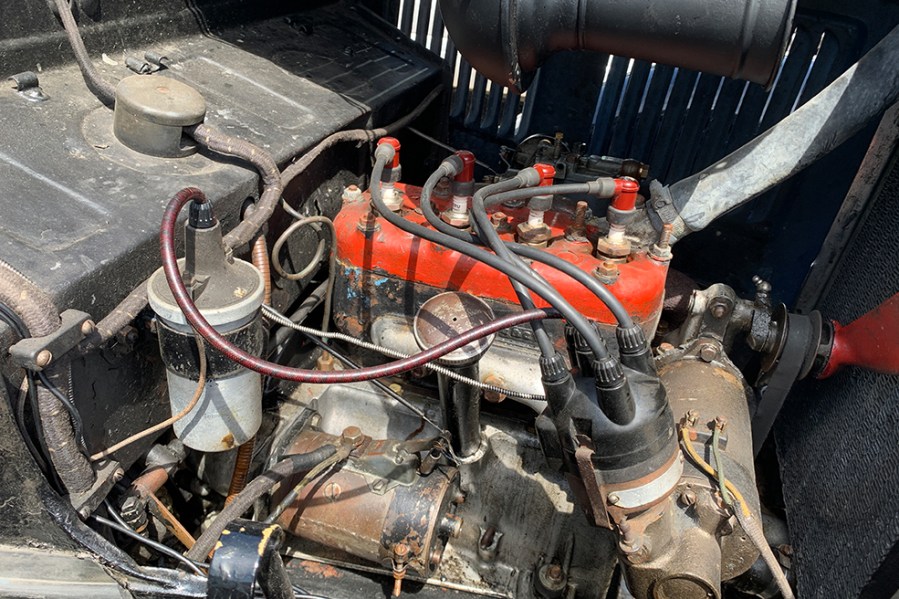
Engine and transmission
The little Seven powerplant is a robust thing but will tend to smoke when it’s worn, although this should be obvious. Pre-1936 engines used a two-bearing crankshaft which was apparently designed to flex slightly and some reckon these engines are less smooth but more reliable than the later three-bearing unit. Crankshaft problems will be obvious from the trademark rumbling noises.
The 747cc units run a low-pressure oil system so don’t be surprised to find the pressure drops to around 4psi when warm. The pressure-lubricated Big Seven engine should show 25-30 psi warm.
If the gearbox jumps out of gear under load or on the overrun then this can be down to failing detent springs or selector forks needing adjustment. If the synchromesh doesn’t seem too good then it’s best just to live with it. Owners report that the synchro boxes tend to jump out of gear more when worn.
Steering, suspension and brakes
The front end uses king pins and trunnions and needs regular greasing. Check for wear in the king pins and bushes, as well as the steering box and balljoints. Inspect the leaf springs for cracks and if the ride height looks wrong or the car isn’t level side-to-side then suspect they have sagged with age. The Seven uses rubber links to the shock absorbers and when these fail, the car can feel unstable.
Brakes are not the Seven’s strongest attribute. On early cars the pedal slowed only the rear wheels and even on the later cars with coupled brakes, stopping quickly requires a heavy pedal effort. Various conversions are available with some even using hydraulic brakes but most owners simply try to keep the standard system operating as well as it can.
It’s not uncommon to find later brakes fitted to a Seven, so don’t be alarmed by this.

Interior and trim
If age has taken its toll then pretty much everything is available to smarten it up again. Some models used inflatable pneumatic seat padding but even these have been remanufactured.
As for the electrical system, remember the Sevens are all six-volt and if everything isn’t in perfect order then voltage drop can be significant. Ensuring that wiring and connectors are all in good order can make a big difference to the brightness of headlamps and similar, while LED bulbs can be fitted these days to improve visibility without overloading the system.
Austin Seven: our verdict
Those in the club scene report that although the Seven has been steadily appreciating over the past few years, it doesn’t seem to have accelerated as much as other classics and the cars are still an affordable prospect.
The cheapest way in is the standard saloon carrying an entry point of around £6000, for which you can expect a usable car that may need some work. Certain types, such as the Top Hat model tend to be at the more expensive end of that price bracket. For the open tourers, you’ll need to start at around £8000 or so for two-seaters with unusually original or expensively restored four-seater running up to around the £15,000 mark and sometimes beyond. The many specials on the market will be more affordable than the factory-bodied cars.
Restoration projects are few and far between and are more often abandoned projects than newly discovered cars, so it’s worth checking carefully to find out what work has been done and how complete the car is. For many, the appeal of these cars is in being able to work on them yourself: as Steve Clark of the Online Austin Seven Club points out, the cars are small enough to live in even the smallest garage and within reason there’s very little you can’t do yourself if you’re prepared to get stuck in and have a go.
Seven owners love their cars and tend to hang on to them for a long time, meaning that cars often tend to change hands within the clubs rather than on the open market. It’s a good idea to join a club before buying the car and you’ll find the Seven social scene is unrivalled; before you know it, you’ll be a in a convoy of the little cars heading across Europe.
Austin Seven timeline
1920
Sir Herbert Austin begins work on his concept for a small, attainable car
1921
Herbert Austin self-funds the Seven project, with first designs drawn up by draughtsman Stanley Edge. A 696cc four-cylinder engine is proposed; Edge also designed the car’s three-speed gearbox
1922
First prototypes built before the Austin Seven is publicly announced in July
1923
Austin Seven enters production with larger 747cc engine, four-seat layout and aluminium bodywork
French firm Automobiles L. Rosengart obtains licence to build the Seven in Paris. Production started in 1927 and ended in 1939
1926
Saloon variant arrives
1927
First Austin Seven Swallow example produced by Williams Lyons and the Swallow Sidecar Company using a Seven chassis and coachbuilt bodywork. Around 3,500 would be made up to 1932
Automobilwerk Eisenach begins production of the licence-built Dixi. This would later become the first-ever BMW car when the famous brand took over in 1928
1928
Arthur Waite wins the 1928 100 Miles Road Race on Phillip Island, Victoria – known later as the 1928 Australian Grand Prix – in an Austin 7
1930
American Austin commences production of licence-built Sevens in Butler, Pennsylvania. The Great Depression saw the firm go bankrupt in 1934
1931
Japanese firm DAT produces the Type 11, a licence-made (or perhaps just copied) Seven – the first car to wear the ‘Datson’ name. This brand would later become Datsun in 1933, and then Nissan in 1934
1932
Four-speed gearbox introduced
1933
Syncromesh added to third and fourth gears
1934
Austin Seven Ruby saloon produced
1936
‘New Ruby’ saloon arrives and is made until 1939

